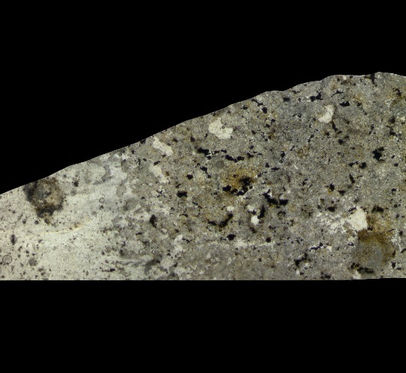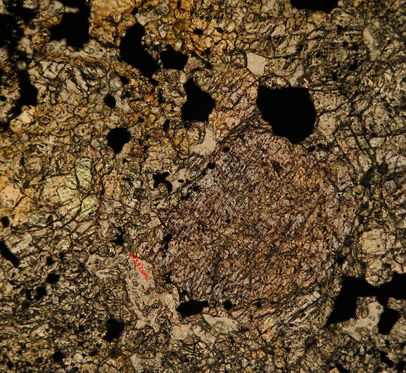top of page
LAVRAS DO SUL
Stony
TYPE:
CLASS:
CLAN:
GROUP:
SUBGROUP:
TYPE PET:
SHOCK STG:
WEATHERING:
COUNTRY:
YEAR:
DESCRIPTION:
CHONDRITE
ORDINARY
H-L-LL
L
-
5
S3-4
W1
BRAZIL - RS
1985
Ordinary Chondrite of petrographic and chemical type L5, Medium shock stage S3-4 and weathering W1.
PETROGRAPHY:
The meteorite shows some well-defined chondrules and fragments dispersed in a recrystallized matrix. The best preserved chondrules are RP and BO and their sizes vary, mainly between 0.5 and 2.0 mm. The opaque phases are kamacite, taenite, troilite and tetrataenite. The latter is seen as a thin layer bordering taenite and plessite. Kamacite is mostly polycrystalline and in some cases plessite shows the pearlitic structure limited by tetrataenite. Sulphides are abundant and are present mainly as single grains. In some places small grains of plagioclase (partially isotropic) are observed. Some oxide veins, as well as iddingsite, penetrate the olivine fractures. A small amount of oxide is present around some metal grains. Melt Pockets are sparse and small. The olivine grains have edges with flat fractures, but clean nuclei, in which mosaic and / or wave extinction are weakly observed.
GEOCHEMISTRY:
The average compositions are olivine (Fa25) and low Ca pyroxene (Fs22.6).
CLASSIFICATION:
Ordinary Chondrite of petrographic and chemical type L5, Medium shock stage S3-4 and weathering W1.
CLASSIFIERS:
M.E. Zucolotto, L. L. Antonello, M. E. Varela and R. Scorzelli
HISTORY:
A single mass weighing ~ 1 kg was found in a stream near the city of Lavras do Sul by Prof. Picada, from the UFRGS Geosciences Institute. He gave it to his colleague Dr. Ary Roisemberg. Geologist Heinrich Frank contacted dr. Hardy Grunewaldt after seeing the specimen in one of Dr. Roisemberg's lectures.
All information that does not have a specific source was extracted from the Meteoritical Bulletin Database.
All images are copyrighted.
bottom of page






